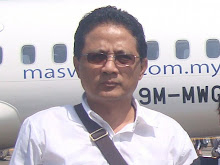Calvin Michel Sidjaja, The Jakarta Post, Jakarta | Thu, 09/08/2011 8:00 AM A | A | A |- Klipping the Jakarta Post
There is striking similarity between the US today and the ancient Roman Empire. The latter was the biggest empire in its time. It had the largest territory, economy and military influence in Europe.
However, there was a price for maintaining such power. As the state expanded its territory and added more colonies, the Roman Empire eventually had to pay more to maintain its city-states.
The pattern can be found in the histories of the rise and fall of great powers. Problems always begin with excessive debt, and state bankruptcy increases social unrest because the government must cut its spending, causing inflation and price hikes.
The US has always been the central power in the Asia-Pacific region. However, its position will be challenged, as it is struggling to manage its economic problems.
The US has more debt than any country in the world. Even if all the 9,300 tons of gold in Fort Knox were liquidated, assuming the price is US$1,898 per troy ounce, it would only bring in $425 billion — about 3 percent of the nation’s $14.3 trillion debt, of which $6.1 trillion was accumulated during the Bush administration, $2.4 trillion from Obama’s and the rest by former administrations.
The gold would be sufficient to pay all the debt if the value increased 33 times the current level to $63,000 per troy ounce. Gold has increased an average of 5 percent in value since 1901.
However, since 1970, the average growth has been 11 percent. If gold increases 11 percent per annum, it would cover the current national debt in 34 years — although the US would have probably accumulated more debt by then.
The reason the US survives is that the current economic system enables other countries to finance indebted countries by issuing sovereign bonds. The US survives because other countries believe the empty words of Washington.
Money is not created from thin air. But the US has cheated the system by issuing more debt it says it can afford. It is only backed by the fact that the US is still the largest economy in the world and backed by two AAA grades.
Interest rates are the common benchmarks of measuring inflation in a country. A low interest rate means the country needs to increase its consumption to stimulate economic growth. The US, however, suffers multiple jeopardies: a huge trade deficit, account deficit and a high unemployment rate.
Similar conditions happened in 1981: The US encountered twin deficits in export and budget. Paul Volcker raised interest rates, which triggered a Latin crisis and bankrupted Mexico because the commercial banks were unable to pay their debts due to higher interest and appreciation of the dollar.
The Fed has lowered interest rates to trigger more spending, but with the high unemployment rate, people are more concerned about their job security than taking loans from banks.
When the Western Roman Empire fell, the country dissolved. The Eastern Roman Empire — the Byzantine Empire — survived and became another great power in its age before it collapsed in the 14th century.
When the Soviet Union fell, the United States quickly filled its place and turned out to be a central hegemony. However, this hegemony is now challenged by China.
In Asia Pacific, the balance of power in sub-regions has been disturbed by the absence of the US. The region accounts for approximately 60 percent of the world’s GDP and has high importance in the global economy.
The China-ASEAN Free Trade Area is one of China’s successful feats in securing its economic influence in the Southeast Asian sub-region, as it is currently the area with largest economic growth and consumption spending. With excessive foreign reserves and undervalued currency, China could shut its ear to any complaints from its Southeast Asian neighbors.
Even with all the Southeast Asian countries combined, their economies and military powers are small compared to China’s. It is also worsened by the tension of the South China Sea conflict.
The ASEAN Regional Forum (ARF) is still talking shop. It is still the only place to talk about security, consultation without a concrete result or binding decision.
The Middle Kingdom is the largest country in Asia — economically powerful with one of the largest military expenditures in the world and sophisticated technology. It puts China and ASEAN in a vertical position with little room to negotiate.
Indonesia, despite being the largest economy and country in Southeast Asia, is still unable to secure leadership in Southeast Asia. This is because it has tons of domestic problems, mainly corruption, aging infrastructure and government reform.
Its military expenditure is one of the smallest in the world (0.8 percent of GDP); it is not ready to balance China in Southeast Asia.
The US economic meltdown has created a vacuum of power in the Asia-Pacific region. There is not much to hope for from the US with its current recession.
Unless the US can tackle its domestic problem, China will be the new hegemony in the Asia-Pacific region.
The writer is a researcher from HD Asia Advisory. The opinions expressed are his own.
Subscribe to:
Post Comments (Atom)

No comments:
Post a Comment